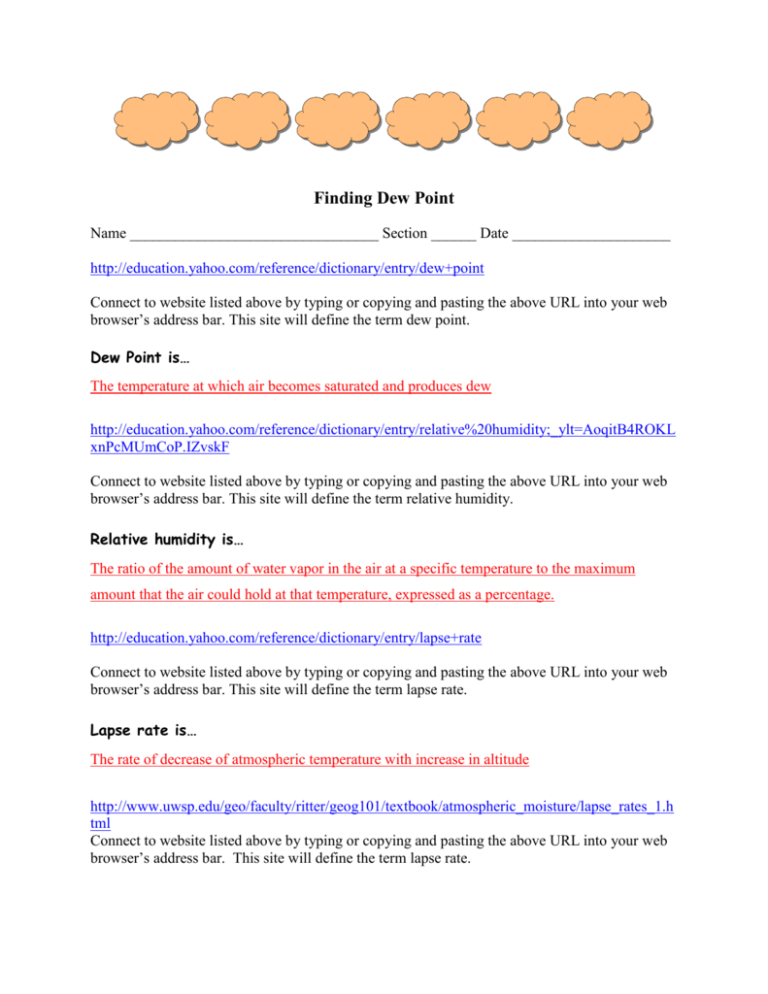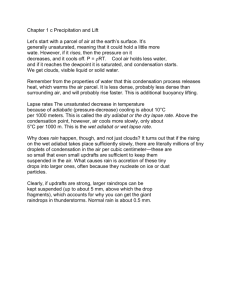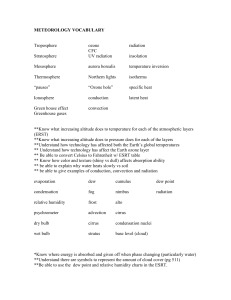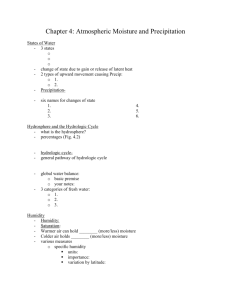Finding Dew Point - Answers
advertisement

Finding Dew Point Name _________________________________ Section ______ Date _____________________ http://education.yahoo.com/reference/dictionary/entry/dew+point Connect to website listed above by typing or copying and pasting the above URL into your web browser’s address bar. This site will define the term dew point. Dew Point is… The temperature at which air becomes saturated and produces dew http://education.yahoo.com/reference/dictionary/entry/relative%20humidity;_ylt=AoqitB4ROKL xnPcMUmCoP.IZvskF Connect to website listed above by typing or copying and pasting the above URL into your web browser’s address bar. This site will define the term relative humidity. Relative humidity is… The ratio of the amount of water vapor in the air at a specific temperature to the maximum amount that the air could hold at that temperature, expressed as a percentage. http://education.yahoo.com/reference/dictionary/entry/lapse+rate Connect to website listed above by typing or copying and pasting the above URL into your web browser’s address bar. This site will define the term lapse rate. Lapse rate is… The rate of decrease of atmospheric temperature with increase in altitude http://www.uwsp.edu/geo/faculty/ritter/geog101/textbook/atmospheric_moisture/lapse_rates_1.h tml Connect to website listed above by typing or copying and pasting the above URL into your web browser’s address bar. This site will define the term lapse rate. When air rises 100M, how much does the temperature drop? The normal lapse rate of temperature is the average lapse rate of temperature of .65o C / 100 meters. On your own: If air were to rise 1000 meters, how much would the temperature fall? 6.5° C If air were to rise 2000 meters, how much would the temperature fall? 13.0° C http://www.ace.mmu.ac.uk/eae/Weather/Older/Condensation.html Connect to website listed above by typing or copying and pasting the above URL into your web browser’s address bar. This site will define the term lapse rate. What is the condensation? Condensation is the process whereby water vapor in the atmosphere is returned to its original liquid state. In the atmosphere, condensation may appear as clouds, fog, mist, dew or frost, depending upon the physical conditions of the atmosphere. As moist air cools, it reaches a point when the water vapor can no longer stay a vapor and it condenses to form a liquid, a cloud. If the air is high in the sky, condensation forms Clouds If the air is close to the ground, condensation forms Fog If the air is below the freezing point, condensation forms Frost







